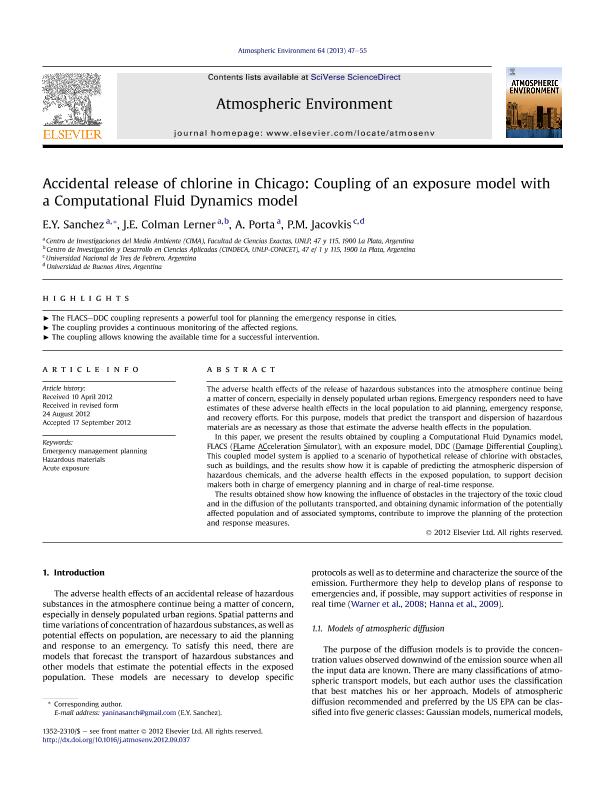Artículo
Accidental release of chlorine in Chicago: Coupling of an exposure model with a Computational Fluid Dynamics model
Fecha de publicación:
05/2013
Editorial:
Elsevier
Revista:
Atmospheric Environment
ISSN:
1352-2310
Idioma:
Inglés
Tipo de recurso:
Artículo publicado
Clasificación temática:
Resumen
The adverse health effects of the release of hazardous substances into the atmosphere continue being a matter of concern, especially in densely populated urban regions. Emergency responders need to have estimates of these adverse health effects in the local population to aid planning, emergency response, and recovery efforts. For this purpose, models that predict the transport and dispersion of hazardous materials are as necessary as those that estimate the adverse health effects in the population. In this paper, we present the results obtained by coupling a Computational Fluid Dynamics model, FLACS (FLame ACceleration Simulator), with an exposure model, DDC (Damage Differential Coupling). This coupled model system is applied to a scenario of hypothetical release of chlorine with obstacles, such as buildings, and the results show how it is capable of predicting the atmospheric dispersion of hazardous chemicals, and the adverse health effects in the exposed population, to support decision makers both in charge of emergency planning and in charge of real-time response. The results obtained show how knowing the influence of obstacles in the trajectory of the toxic cloud and in the diffusion of the pollutants transported, and obtaining dynamic information of the potentially affected population and of associated symptoms, contribute to improve the planning of the protection and response measures.
Palabras clave:
Exposure Model
,
Computational Fluid Dinamics
,
Polutants Release
Archivos asociados
Licencia
Identificadores
Colecciones
Articulos(CCT - LA PLATA)
Articulos de CTRO.CIENTIFICO TECNOL.CONICET - LA PLATA
Articulos de CTRO.CIENTIFICO TECNOL.CONICET - LA PLATA
Articulos(CINDECA)
Articulos de CENTRO DE INV EN CS.APLICADAS "DR.JORGE J.RONCO"
Articulos de CENTRO DE INV EN CS.APLICADAS "DR.JORGE J.RONCO"
Citación
Sanchez, Erica Yanina; Colman Lerner, Jorge Esteban; Porta, Atilio Andrés; Jacovkis, Pablo Miguel; Accidental release of chlorine in Chicago: Coupling of an exposure model with a Computational Fluid Dynamics model; Elsevier; Atmospheric Environment; 64; 5-2013; 47-55
Compartir
Altmétricas




